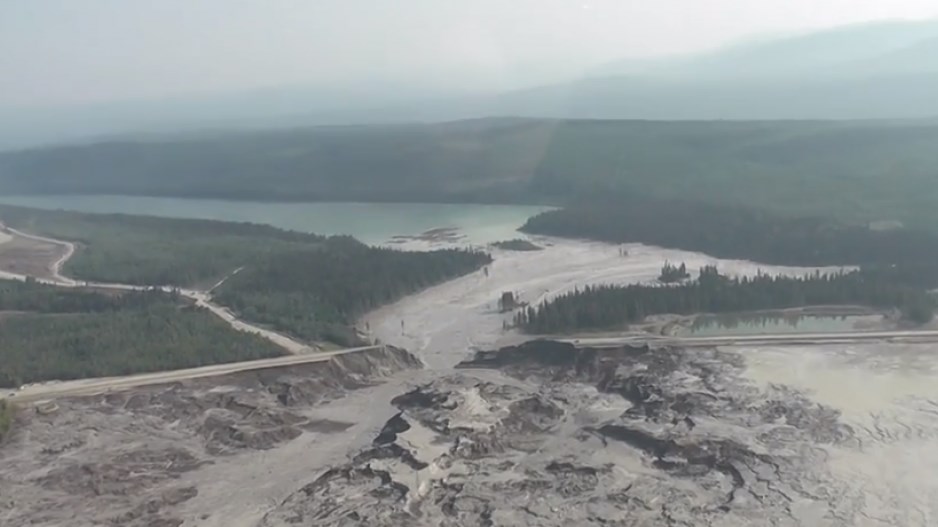Mining companies and the B.C. government need to start putting safety ahead of economics when planning new mines, and need to adopt newer, safer technology and designs for tailings ponds, a panel of experts said January 29.
The three-person panel of engineering experts was tasked with investigating the cause of the worst mine disaster in B.C. history.
On August 4, an earthen dam containing tailings from the Mount Polley copper-gold mine collapsed, unloading 10 million cubic metres of water and 4.5 million cubic metres of slurry into Polley Lake and Hazeltine Creek.
The panel concluded that the disaster was caused by a sudden, unexpected failure of the foundation of a perimeter dam enclosing the tailings pond, and that the problem was fundamentally a design problem.
“We concluded that the dominant contribution to the failure resides in the design,” said Norbert Morgenstern, a professor emeritus of civil engineering at the University of Alberta.
The fatal flaw in the design was that it failed to take into account the unstable nature of a layer of “glacial lake” material beneath the foundation of the dam. The weight of the dam simply become too much for the weak foundation to bear.
Its strength was also compromised when the company, which was running short of rock fill for building up the outer part of the dam, decided to compensate by increasing the steepness of the slope.
While the main dam was buttressed to compensate for the increased steepness of the slope, the perimeter dam – the one that failed – was not buttressed.
While it was the weakness of the foundation that loaded the gun, Morgenstern said it was the steepness of the slope that “pulled the trigger.”
In the wake of the dam’s failure, it was speculated that the volume of water covering the tailings may have increased pressure to the point that it caused a breach.
The panel confirmed that the volume of water had increased “exponentially” since 2010 to 10 million cubic metres. The dam’s embankment was built up accordingly – something that a former engineering firm responsible for the dam had flagged as a concern.
But the panel concluded that the large volume of water in the tailings pond did cause the collapse. It did worsen the environmental damage, however, because it increased the amount of mine tailings slurry that ended up washing into Hazeltine Creek and Polley Lake.
“If we hadn’t had so much water, we would not have gotten so much tailings released,” said dam engineer Steven Vick.
The NDP had raised questions about the role staff cuts in the mines ministry and a 50% reduction in mine inspections might have played in the Mount Polley incident.
But the panel concluded that no amount of inspection would have detected a potential problem because, Morgenstern said, “there was nothing to see.”
The panel concluded that fundamental changes must be made to the way mines are permitted and tailings ponds designed.
“The panel recognizes that we can’t continue business as usual,” Vick said. “We can’t continue to use technology that’s fundamentally 100 years old.”
The panel recommends the adoption of best available technology for tailings ponds, such as filtering technology in which tailings are filtered and dewatered and dry-stacked.
The panel also said safety needs to come before economics in the permitting process.
“Right now, the way tailings dams are planned, many important decisions occur during the economic evaluation phase early in a project, and safety considerations follow along after that,” Vick said.
“We want to reverse that. The first thing that should happen is that the safety evaluation should be performed and we chose methods and practices that put safety first and then evaluate the economics in that context.”




